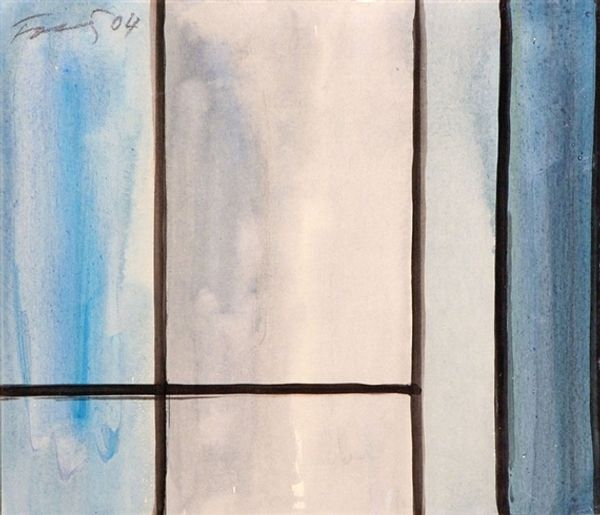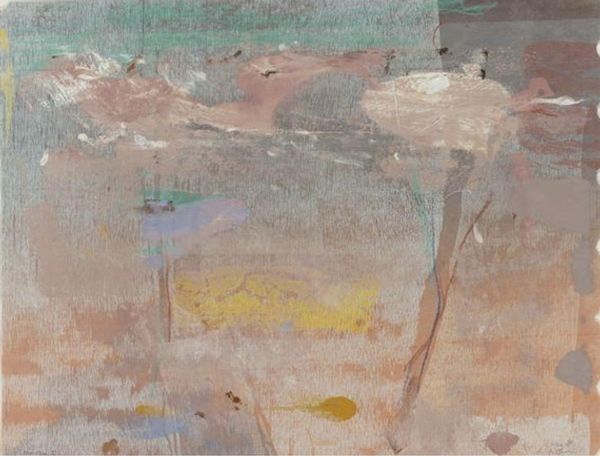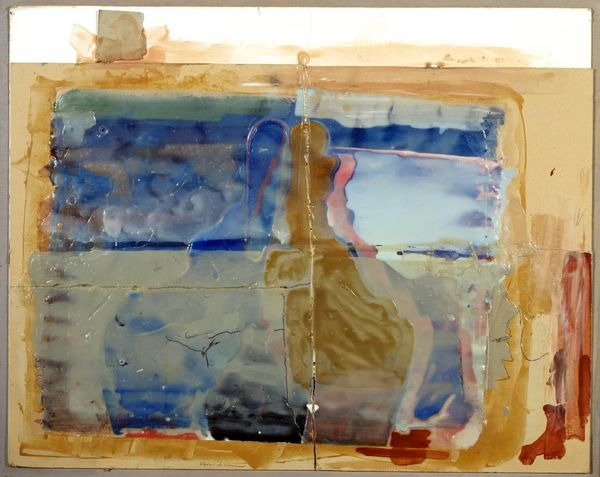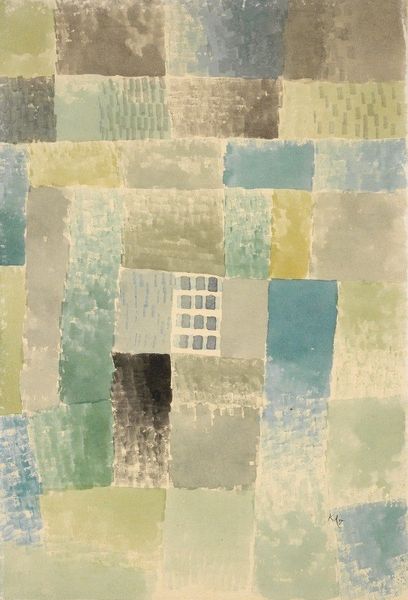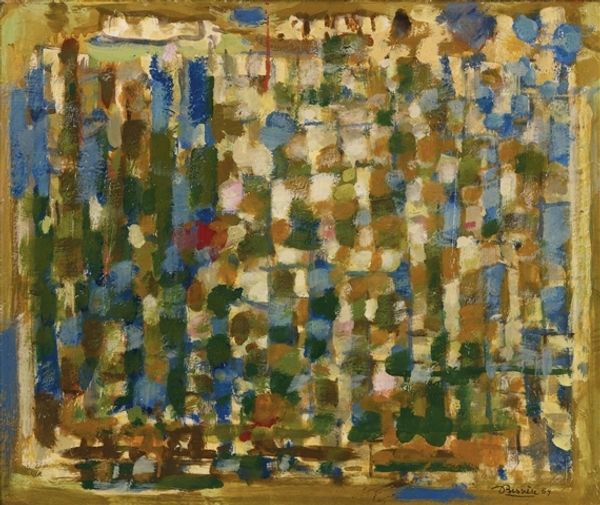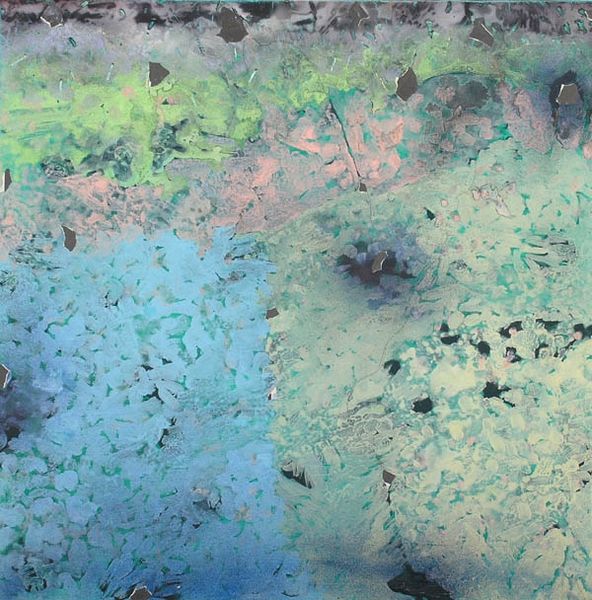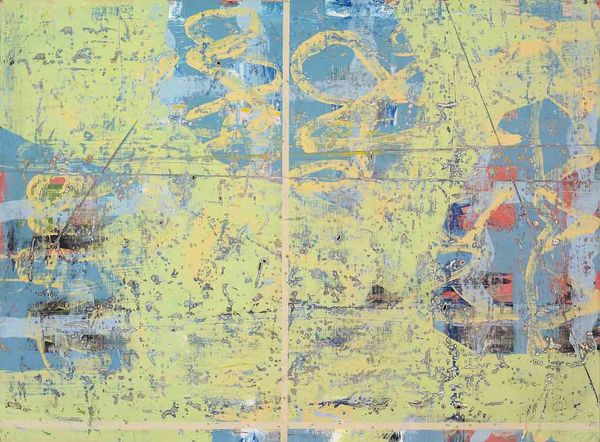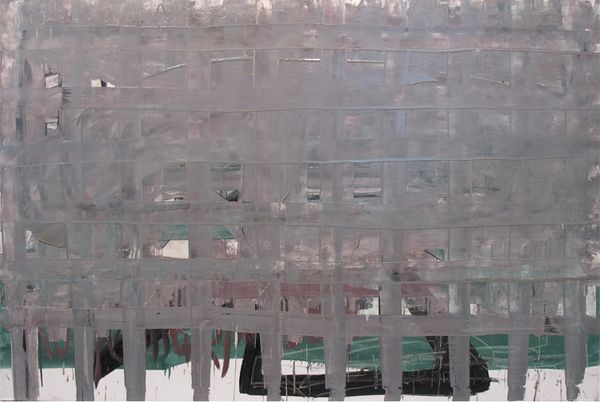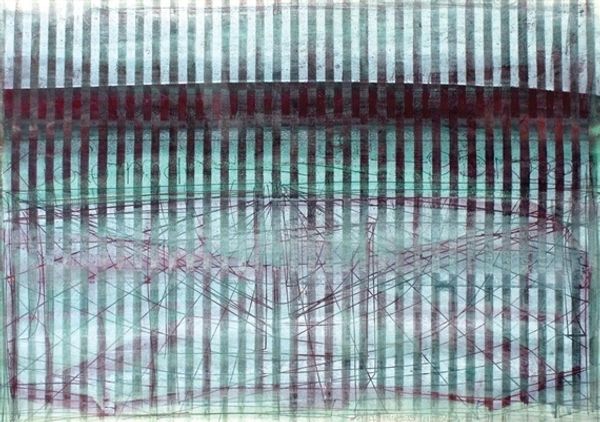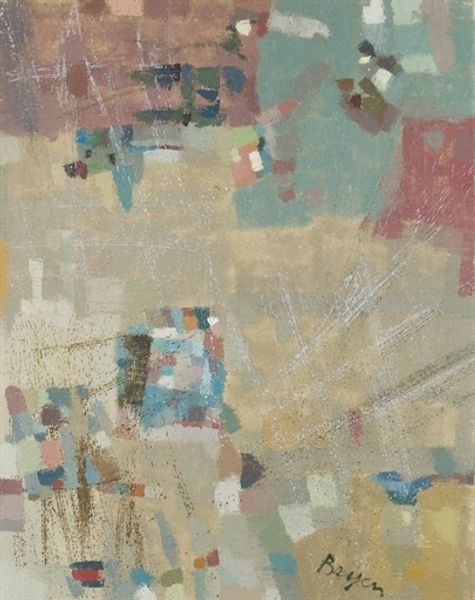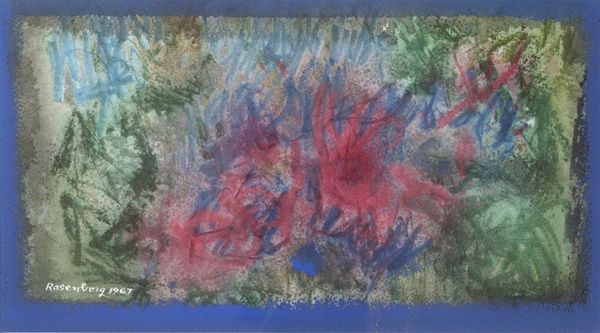
mosaic, painting, watercolor
#
mosaic
#
abstract painting
#
water colours
#
painting
#
watercolor
#
line
#
mixed media
Copyright: Julio Resende,Fair Use
Editor: This is "Azulejo, Portuguese Institute of Oncology," created in 1992 by Julio Resende, utilizing mosaic and watercolor techniques. It strikes me as unexpectedly cheerful, given its location in a place dedicated to treating illness. What’s your interpretation? Curator: Seeing it as a mosaic, my eye is immediately drawn to the individual tiles. What was the social context? Who was making these tiles, how much were they paid? This wasn't some solitary artistic endeavor; it was collaborative production, likely involving laborers with varying degrees of artistic training, possibly contributing to the social dynamic within the Institute itself. Consider the labour embedded within each individual square; it invites speculation about materiality, construction, even consumption. Editor: I never thought about that! It almost reframes my initial understanding. The "cheerfulness" is still there, but more like a product of the collective than a singular artist. Curator: Exactly! How does this process, these hands involved, this mode of artistic production, influence the final visual outcome, and in turn, affect people at the Oncology Institute? The choice of materials —watercolor washes on these pre-fabricated tiles— it also softens the cold austerity you find so often in hospitals. Think how unusual for fine art and more connected with functional everyday crafting and building trades. Editor: It is unexpected. Most hospital art seems to aspire to high art. So, the tiles, the laborers creating these, the method, are all meant to alter people's experience? Curator: It's plausible, and powerful. This makes you wonder what the boundaries truly are between craft, building trades and high art; we have to be prepared to rethink art as distinct from the overall dynamics of labor and human relationships involved in their creation. Editor: That’s really interesting. Looking at the individual tiles and imagining the whole production, and social context is quite transformative. Thank you for your perspective! Curator: Indeed. It gives new meaning to a wall mosaic.
Comments
No comments
Be the first to comment and join the conversation on the ultimate creative platform.

